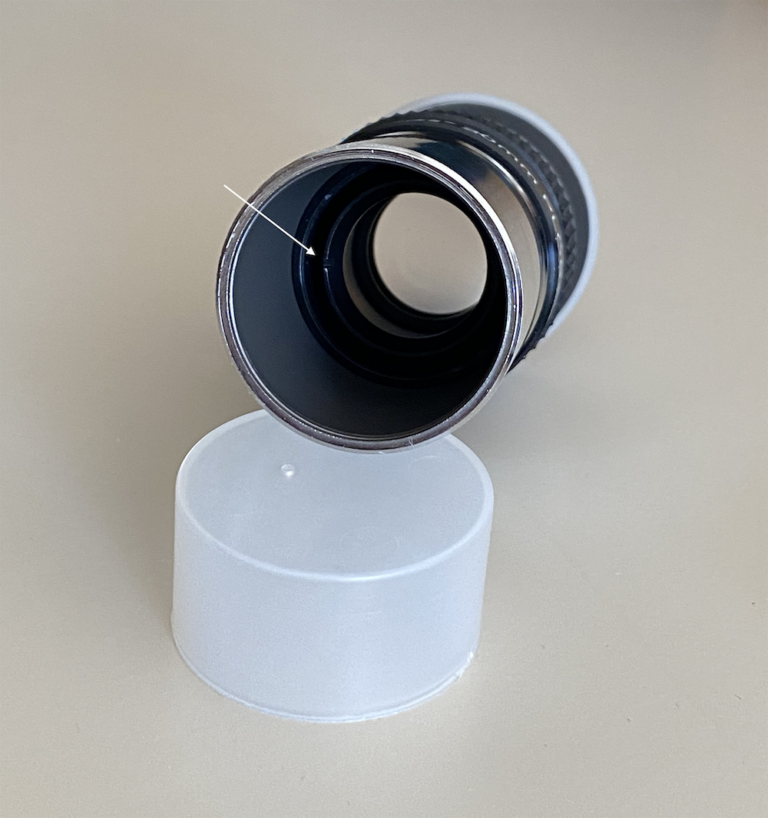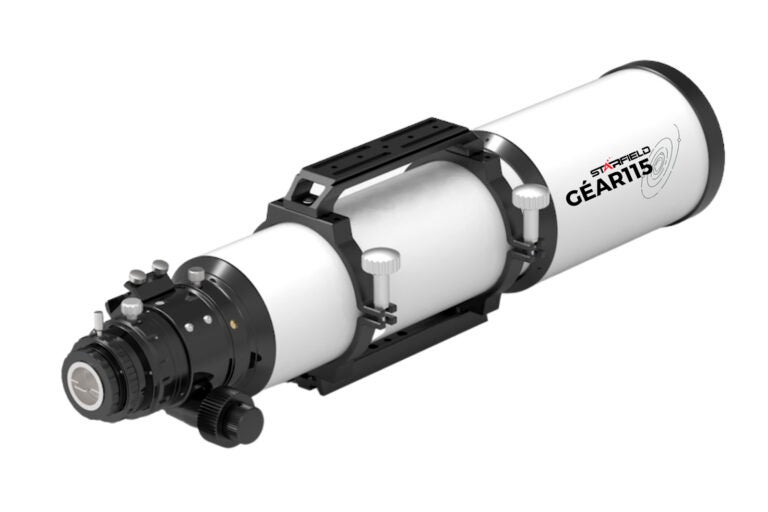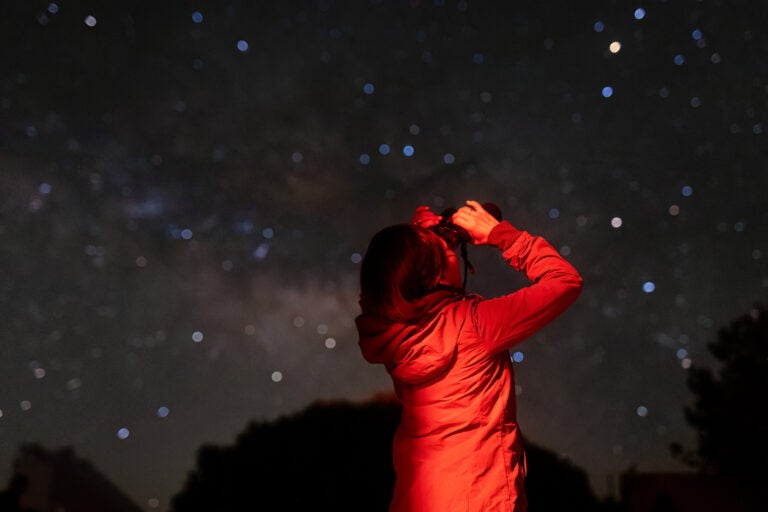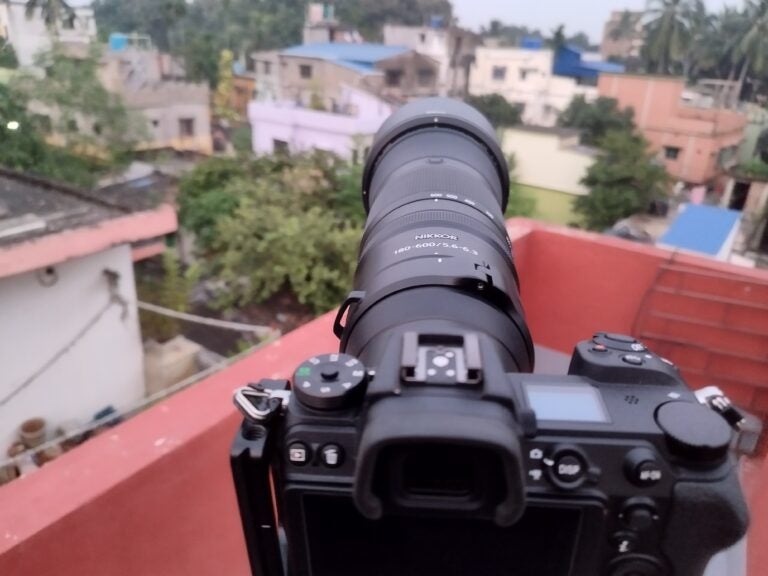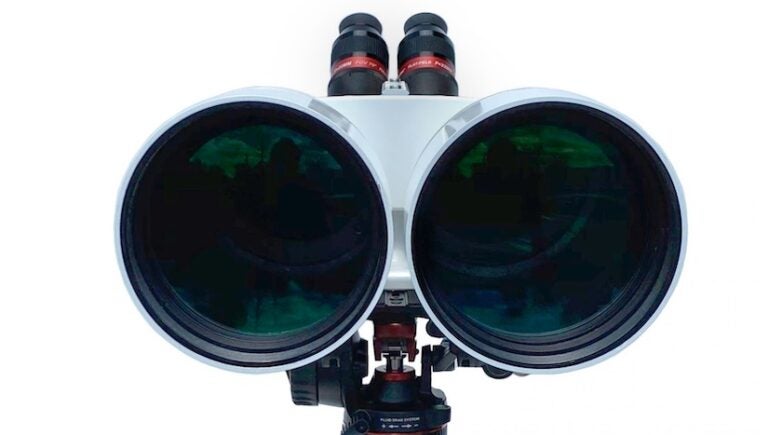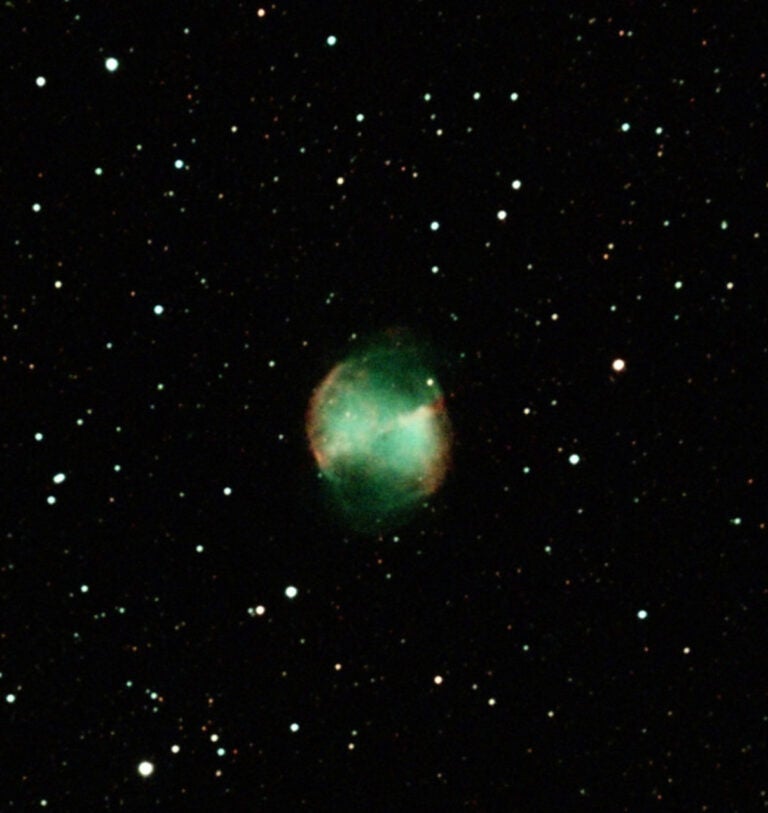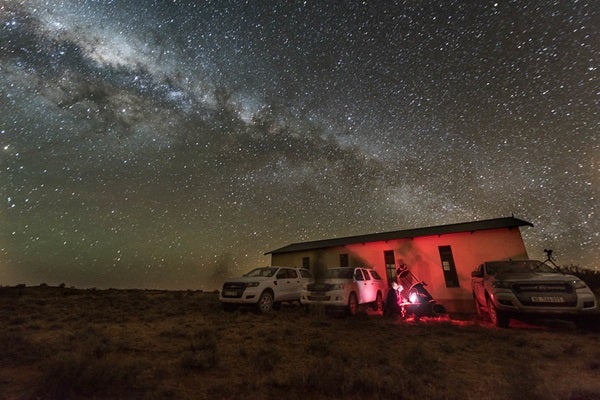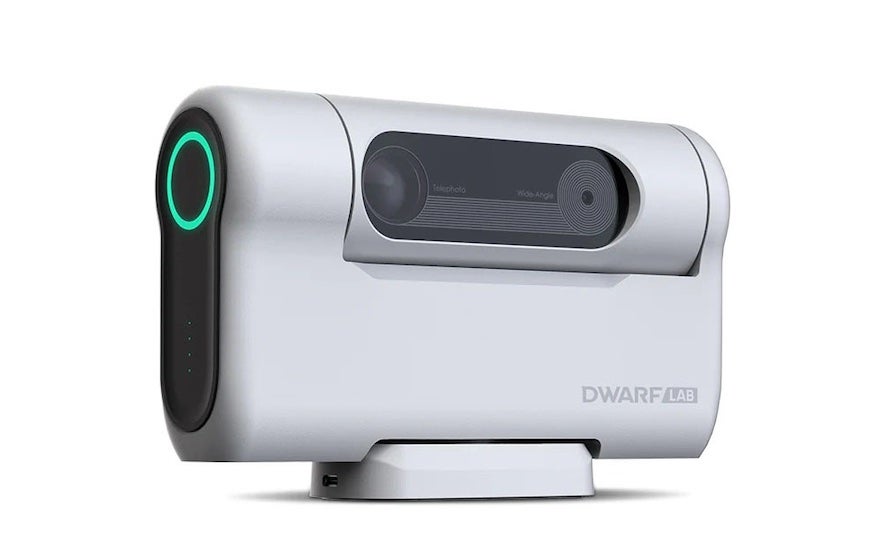
We have smartphones, smart cars, smart appliances, and even smart lightbulbs. What about smart telescopes?
You could say that smart scopes have been around since the first go-to models were introduced decades ago. But over the past few years, a new breed of even-smarter telescopes has become increasingly popular. These next-generation smarties are not for visual observation, however. They don’t even have an eyepiece to look through. Instead, they include integrated cameras that connect to smartphones and tablets and allow the user to see and photograph celestial objects on a screen. And for the cherry on top, they come in small packages, making them easily portable inside a tote bag.
One of the newest kids on the block is DwarfLab’s initial offering, the DWARF II smart telescope. This strange-looking device resembles the two-eyed mast-mounted cameras on the Mars Curiosity and Perseverance rovers, rather than a conventional telescope.
What’s in the box?
The DWARF II’s clever optical design includes two apochromatic objective lenses: one for wide-field imaging and a second for telephoto shots with an aperture of 24mm. Light passes through an internal series of prisms and lenses spaced across the width of the housing to focus images onto a Sony IMX415 STARVIS sensor. The four-element f/4.2 telephoto lens has a folded focal length of 100 mm; accounting for the sensor crop factor, the equivalent focal length is 675mm. The wide-angle lens has a 48mm equivalent focal length at f/2.4.
The DWARF II is available in two versions: Classic and Deluxe. The Classic Edition comes with a replaceable battery, a 64 GB microSD card, and a 5.1- to 6.7-inch-tall (13 to 17 centimeters) tripod. The Deluxe version adds a second battery, two neutral density (ND) 1¼” solar filters, a 1¼” Ultra High Contrast (UHC) filter, and a filter adapter. Both options include a soft case to hold it all. The case measures only 9½ inches by 7 inches by 6 inches (24 cm by 18 cm by 15 cm) and weighs just 4¼ pounds (2 kilograms) when carrying the filters, tripod, and second battery.
Last winter, I had a chance to put the Deluxe DWARF II through its paces to see just how smart this compact scope really is. Quite honestly, I was skeptical due to such a small aperture, but I left my first session as a DwarfLab believer.
After unpacking the box, I downloaded and installed DwarfLab’s app onto my phone. The app, available for both iOS and Android systems, controls all telescope functions and pairs with the DWARF II effortlessly. It allows you to operate the telescope in several modes, since it can be used for both terrestrial and astronomical imaging. For this review, I’ll focus on the app’s “Astro” mode.
While I was in the process of writing this review, DwarfLab rolled out a much-anticipated update to the app. The newest version includes several welcome improvements, most notably an autofocus feature. Digital cameras often do not autofocus well at night, but I was pleasantly surprised that DwarfLab has conquered that hurdle successfully. Simply pressing the app’s “Autofocus” command produced sharp images.
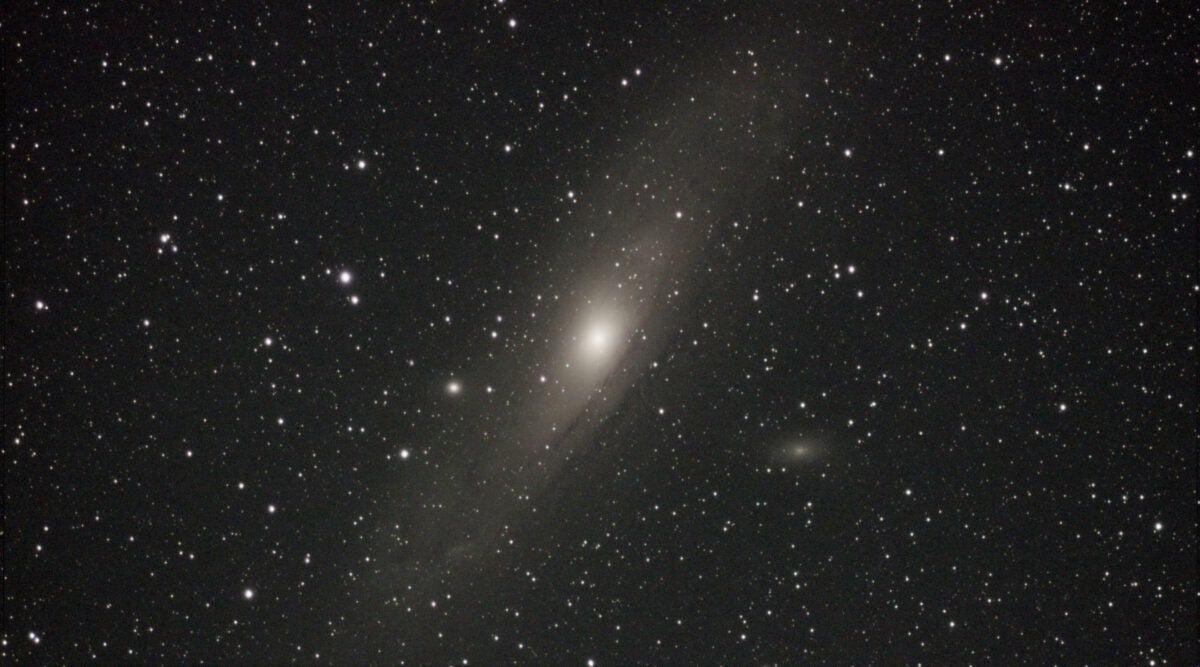
It’s showtime
Before capturing any nighttime images, I had the DWARF II take a series of dark frames that would be used later to ferret out hot pixels and other defects that would otherwise degrade subsequent astroimages. Fortunately, this only needs to be done once per session during the initial setup.
I headed outside on the next clear night and set up the DWARF II. Although a capable tabletop tripod is included, I used my own full-size tripod instead, since I didn’t have any sturdy tables available.
Calibrating the telescope’s go-to function couldn’t be any simpler. After I aimed the dual lenses toward a wide swath of unobstructed sky and selected “Calibrate” from the app’s menu, the telescope quickly and quietly slewed back and forth — first left, then center, and finally to the right, to sync with the current sky. All of it took less than a minute. Next, I selected a “Star Target” from its extensive list of objects. The little telescope aimed itself quickly and was spot-on every time.
Before I could start imaging, I needed to make a few choices. Did I want the images to be saved as FITS or TIFF files? Did I want to use the telephoto or wide-field lens? How about the exposure length? The shutter speed can be set to automatic or adjusted manually from 1/10,000th of a second to 15 seconds. I usually went with my preference: eight to 10 seconds.
I then selected a gain value from 0 to 240. This is akin to the ISO setting with conventional cameras. The higher the value, the brighter the signal recorded — however, also the greater the noise. I stuck with 50 to 80 in most cases.
There is also a built-in infrared (IR) filter that can be toggled on or off. Leaving it off (labeled “Pass” in the app) allows IR light to reach the sensor and is best used for emission nebulae. Turning the IR cut filter on blocks IR light, perfect for other objects and normal daytime photography.
Finally, I chose the number of images to take. I typically went with 50 to 200, but the DWARF II is able to capture up to 999 images.
When all was configured, I pressed the shutter button on the app and watched the image on my smartphone’s screen blossom before my eyes. Best of all, after the initial setup, I did all that from the comfort of my warm home. The DWARF II has a connection range of about 33 feet (10 meters), although it can be less if something blocks the line of sight.
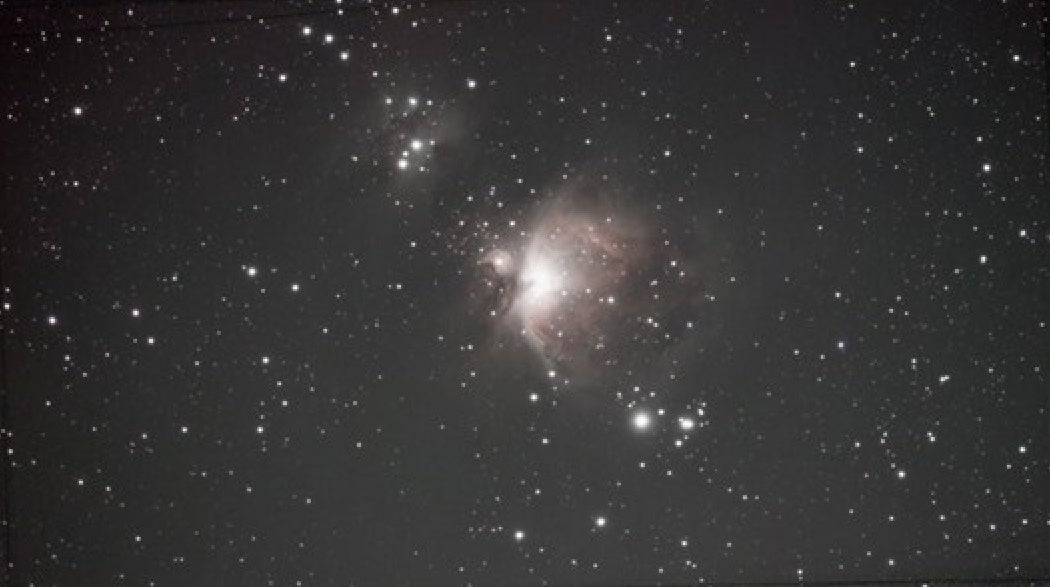
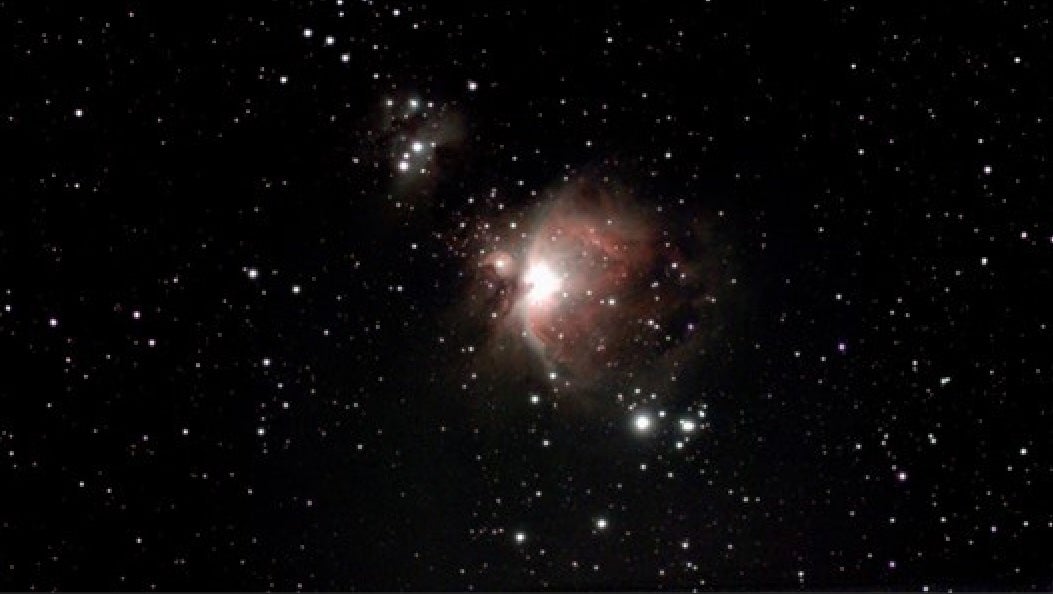
Small but mighty
Afterward, the images can be downloaded to your phone or tablet for easy sharing with friends and family. Or, if you prefer, you can remove the memory card from the telescope and process the images further on a computer. The DWARF II stacks and processes all images automatically, but also saves each image individually for post-processing using third-party software.
Each battery that came with my DWARF II had a life of about 1.5 hours in freezing weather — in warmer weather, it should last longer. If a prolonged session is planned, an external power source can be plugged into the charger built into the telescope’s base using a USB-C cable.
I was astonished by the results delivered by the little DWARF II. On the first night out, I was able to set up the telescope, calibrate it to the sky, choose exposure parameters, and be ready to go after a short five to six minutes. Before I knew it, I was getting images of several targets.
To capture the Orion Nebula (M42), I set the DWARF II to take 100 individual images with an 8-second exposure each. I subdued the light pollution in my suburban backyard by using the supplied UHC filter. The nearby Horsehead Nebula was caught nicely using 200 ten-second exposures.
I then aimed at the Pleiades (M45), which easily fit into the field of the telephoto system. The brighter stars appeared a little bloated, which could have been caused by either the optics or high-level clouds. But what really struck me was that I also captured the faintest hint of the 16th-magnitude galaxy UGC 2838, which lies 16′ west of Electra (17 Tauri). That’s amazing for a 24mm aperture.
I continued to fill my onboard album with great images — including the Sun and Moon. Planets are not the DWARF II’s forte due to the short focal length, although Jupiter’s moons are resolvable. But for deep-sky objects, its power is amazing and shouldn’t be underestimated.
I came away extremely impressed with the DWARF II. While the images should not be expected to compete with high-end imaging gear, the ease of use and remarkable results will undoubtedly get many people interested in astroimaging who might otherwise be turned off by the difficulty or expense. DwarfLab’s DWARF II is just plain fun. And I expect it will revolutionize our hobby.

